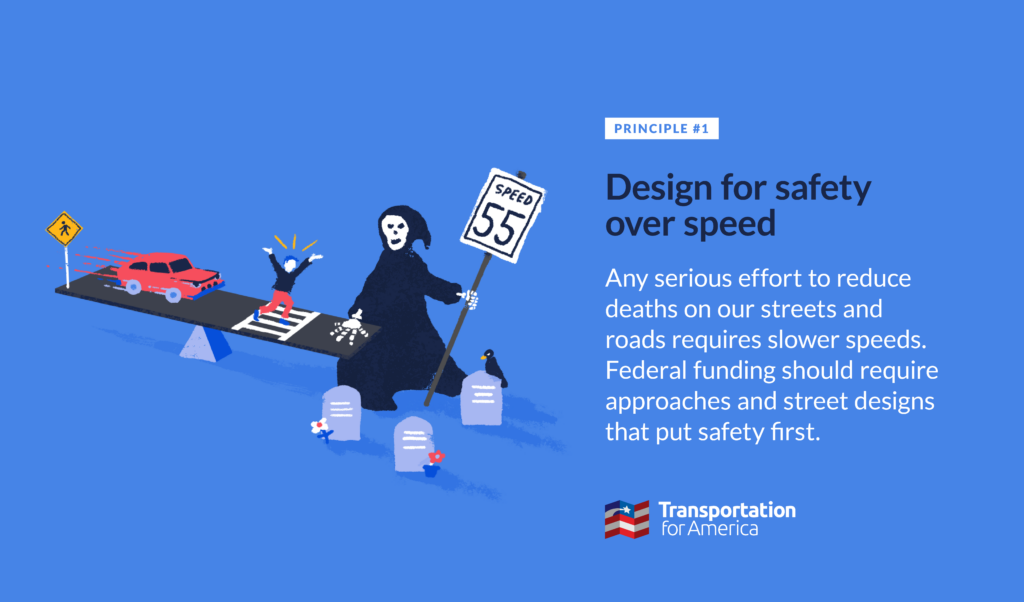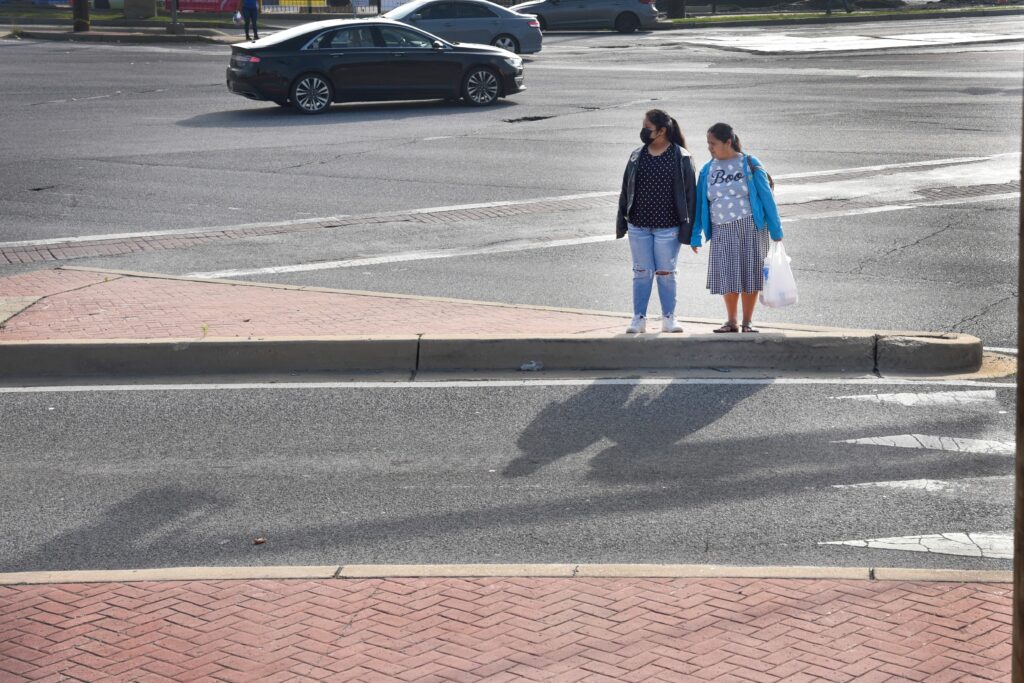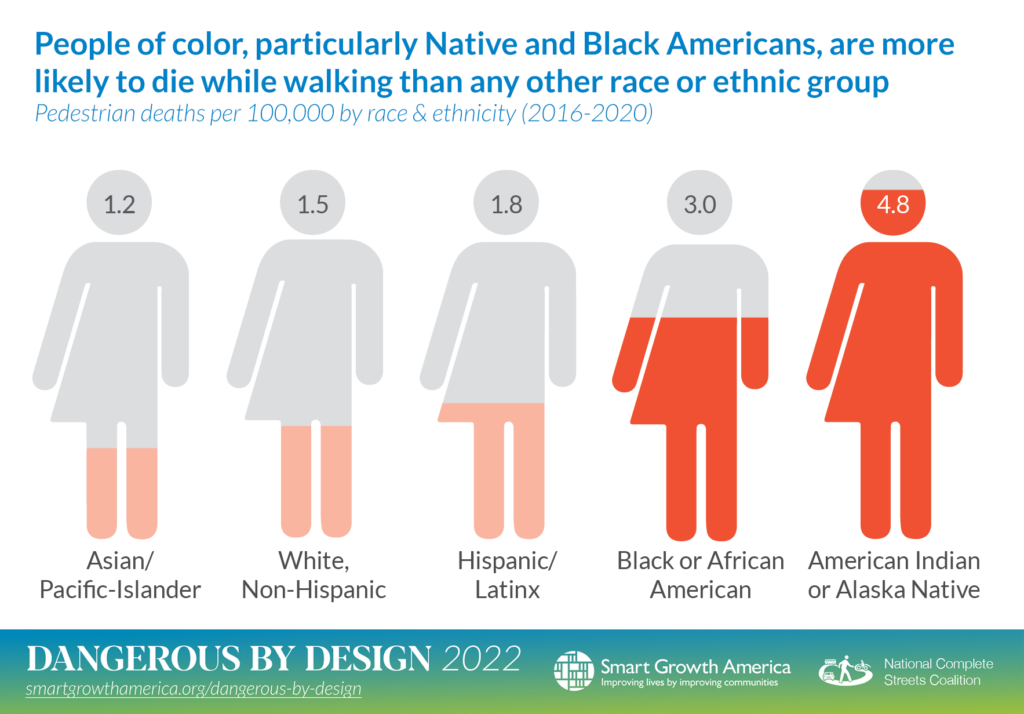
Repealing jaywalking laws to refocus on street design

Washington could be the next state to repeal jaywalking laws. While the repeal could address racial and social justice issues, the effort could also lead the conversation toward more just and safe street design.

One of the intersections of transportation safety and social justice is how we structure our safety strategy with an emphasis on victim-blaming. American transportation planners and engineers have built roadways that mix high-speed traffic with turning vehicles and people walking and biking, killing thousands of people every year. Meanwhile, collision reports focus on whether the person killed while walking or biking was wearing reflective clothing or a helmet, and police clamp down hard on people “jaywalking” without paying significant attention to street design.
Kansas City and several states (Virginia, Nevada, and California) have taken steps to decriminalize jaywalking, and this year advocates in Washington State are ramping up to follow suit. A coalition of groups called “Free to Walk Washington” has worked with the state legislature to get companion bills introduced in both the house and senate in-effect repealing state and local jaywalking laws across the state.
While safe street design is the primary way to improve transportation safety, jaywalking laws couldn’t hurt, right? Wrong. It turns out that jaywalking laws are problematic in a few ways. Besides being ineffective at improving safety, jaywalking laws are frequently enforced disproportionately on Black and brown people, in some cases leading to well-known stories of violence. In Seattle, more than one quarter of jaywalking citations (2010-2016) went to Black pedestrians who make up only 7 percent of the population. And with government budgets stretched thin, enforcing jaywalking laws is an inefficient use of limited police resources.
In a press release announcing introduction of the senate bill, the bill’s sponsor Senator Rebecca Saldaña said, “While jaywalking laws may appear well-intended, they don’t actually keep pedestrians safe and may instead put them at risk. National data shows that jaywalking laws are disproportionately enforced against Black people and in neighborhoods lacking infrastructure and resources. Our streets and right of ways need to have the safety of all users built into the infrastructure.”
The first three states to decriminalize jaywalking have each taken slightly different approaches. Virginia’s law prohibits police from stopping someone just for jaywalking. Nevada’s law reduced the severity of a jaywalking infraction, making it no longer a misdemeanor. California’s law allows pedestrians to cross the street at places other than an intersection as long as it is safe to do so. Washington’s law as currently proposed would go much further, essentially making walking across the street legal in the vast majority of situations, as long as it is safe to do so, and preempting local jaywalking laws.
The concept of jaywalking was originally advanced by automobile manufacturers in the 1920s to shift the responsibility for safety on city streets from the automobile driver to the pedestrian, thus carving out street space for motorists to drive at higher speeds on city streets. Since then, jaywalking laws have become ubiquitous until the last few years.
Unfortunately, the injustice wrought by jaywalking laws is compounded by the injustice of thousands killed while walking. Smart Growth America’s 2022 Dangerous by Design report found that people of color, and particularly Native and Black Americans, are far more likely to die while walking on America’s dangerous streets.
Planners and engineers need to design streets for people first. That means designs that compel people to drive more slowly since the risk of killing a pedestrian drops significantly as speed drops. Narrow lanes, frequent intersections, and edge features like street trees and bollards tend to cause drivers to go slower. Protected sidewalks, and crosswalks in the places where pedestrians want to cross (at bus stops, for example) create safe space for people walking or rolling.
What final form the Washington law takes and whether it passes remains to be seen. We’ll be watching to see what happens in this state and others. And most importantly, we’ll be watching to see if all of these states can rethink the dangerous high-speed street designs that kill so many.




